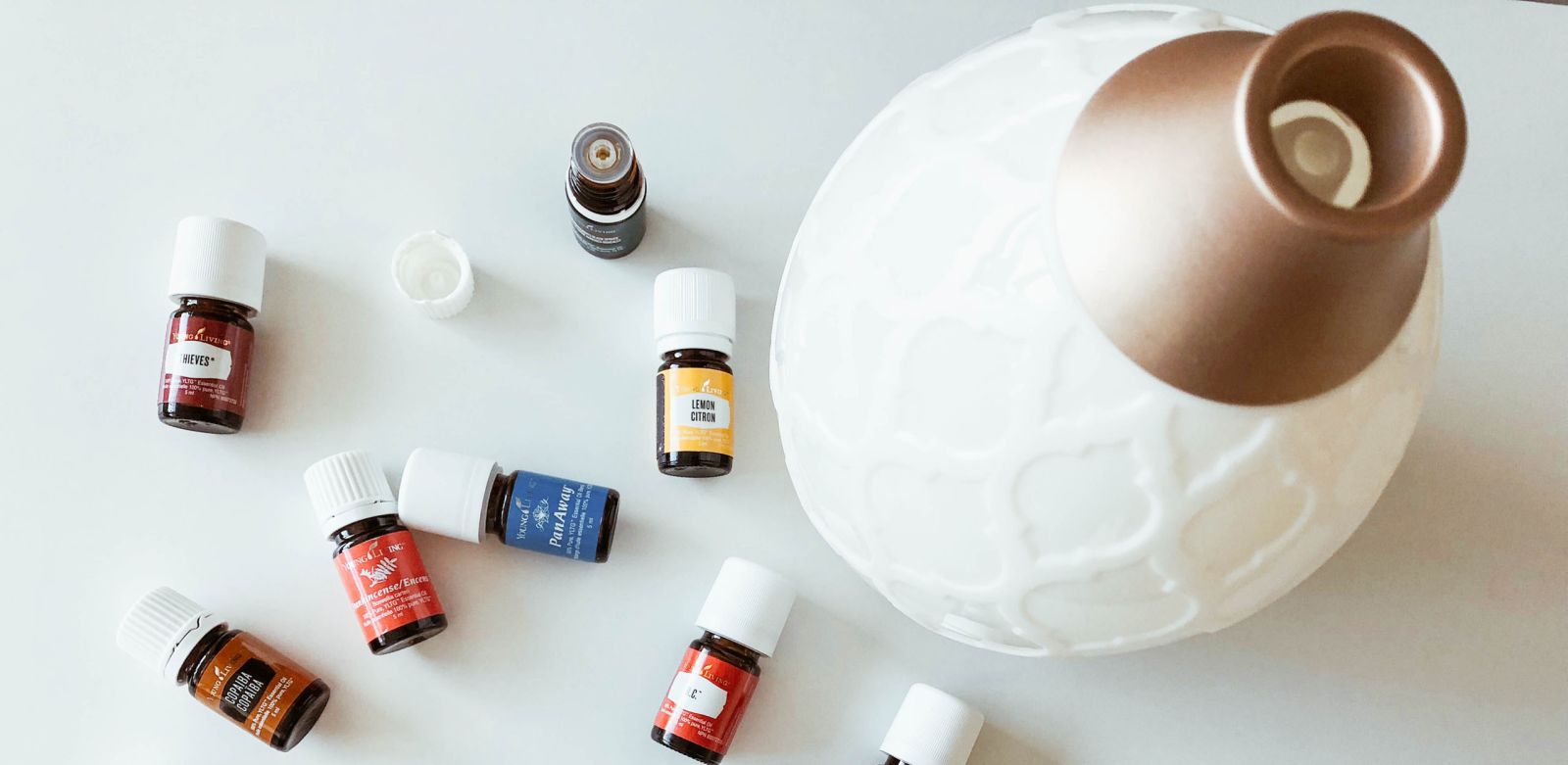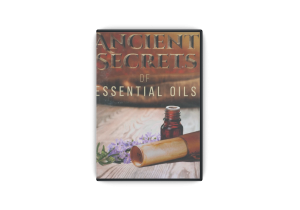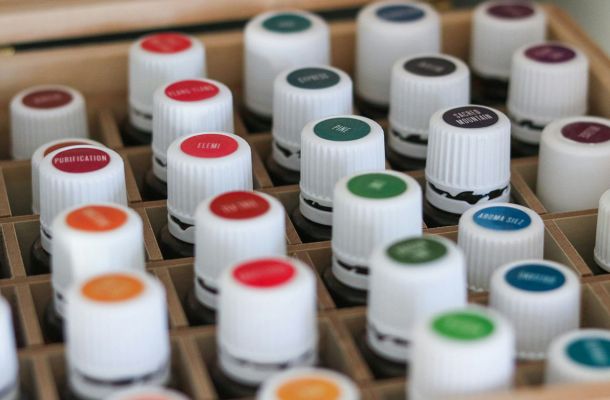Oils for Things that Bug You – Volume 1, Number 5
Please feel free to share this newsletter!

Raindrop Messenger
Official Newsletter of CARE
The Center for Aromatherapy Research and Education
12923 BCR 800, Marble Hill, Missouri USA 63764
(573) 238-4846
NOTE: The information in this newsletter is intended for education purposes only. It is not provided in order to diagnose, prescribe, or treat any disease, illness, or injured condition of the body or mind. Anyone suffering from any disease, illness, or injury should consult with a physician or other appropriate licensed health care professional.
Essential Oils For Things that Bug You Around the House
By David Stewart, Ph.D., R.A.
Originally Posted May – June 2003
Among the many chemicals in our industrial environment that get into our systems and make us sick are the pesticides we use in our homes. We use them because they are toxic to the creatures that bug us, but they are also toxic to us. Sometimes the toxicity is immediately apparent: we get a headache, get sick or feel nauseous from the fumes or other contact.
Sometimes the toxicity is subtle and can accumulate resulting in chronic complaints and disorders (including allergies, cancer and miscarriages) that can be serious and even deadly over time. Sometimes we even put poisons on our pets to deal with ticks and fleas, not realizing that these substances are not healthy for us nor our animals.
How to Use Oils for Pest Control
As YLEO distributors, we don’t need poisons to kill pests. We can repel them (and even sometimes kill them) with substances that are not only harmless to us but are actually healthful to us. To the right is a list of oils that will solve most of your pest problems around the house. And how do you use them? One way is to get a pistol-grip squirt bottle. Mix a few drops of the oil with some water, shake it up, and start firing. If you have bugs on your plants, like aphids on your roses, you can squirt the leaves and drive the bugs away with no harm to your plant. You can do the same with the other pests. As for ants, you can smear a line of peppermint or spearmint across your kitchen counter or floor and the ants won’t cross it. If you already have a line of ants invading your house, just draw a line of oil across them and they will turn back. It is fun to watch. And as for flies, you can knock them dead right out of the air with one shot from your pistol grip.
Specific Oils for Specific Insects
Insect
Essential Oil
Ants
Peppermint
Spearmint
Aphids
Cedarwood
Hyssop
Peppermint
Spearmint
Beetles
Peppermint
Thyme
Caterpillars
Peppermint
Spearmint
Chiggers
Peppermint
Spearmint
Cutworm
Thyme
Sage
Fleas
Peppermint
Lemongrass
Spearmint
Lavender
Flies
Lavender
Peppermint
Rosemary
Sage
Gnats
Patchouli
Spearmint
Lice
Cedarwood
Peppermint
Spearmint
Mosquitoes
Lavender
Lemongrass
Moths
Cedarwood
Hyssop
Lavender
Peppermint
Spearmint
Plant Lice
Peppermint
Spearmint
Slugs
Cedarwood
Hyssop
Pine
Snails
Cedarwood
Pine
Patchouli
Spiders
Peppermint
Spearmint
Ticks
Lavender
Lemongrass
Sage
Thyme
Weevils
Cedarwood
Patchouli
Sandalwood
A Brown Recluse Experiment
Seeing how squirting a peppermint-water spray would kill flies in mid-air, I wondered what pure oil would do. So I did an experiment on a brown recluse spider. I captured a live one in a jar and carefully placed one drop of peppermint on one side.
The pure peppermint repelled the spider who crowded to the other side to avoid the oil. When I tipped the jar to force the spider to fall into the oil, it merely squirmed and got away, still repelled by the oil, but not apparently harmed. Then I put a drop of water with the oil and tipped the jar so that the spider slid into the water and oil together and, instantly, it shriveled up died.
Conclusion: The oil alone is an insect repellant. Combined with water, it is an insecticide.
Safe Insect Repellants
As far as repellants go, when you go into the woods and fields, put a little lavender around your ankles, wrists, and waist-band and you won’t have to worry about chiggers or ticks (or Lyme Disease of Rocky Mountain Spotted Tick Fever). Lemongrass, sage or thyme would work, too, but might irritate your skin so put it on your pant cuffs and shirt sleeves.
As for your pets, you can put oils such as Purification, around their necks and backs, but watch to keep oils from around their eyes.
So there you have it. Non-toxic pest control.
Snake Oil and Other After-Bite Remedies
by David Stewart, Ph.D., R.A.
Therapeutic grade essential oils are not only good insect repellants, they are also excellent after you have been bitten. Essential oils are great detoxifiers for insect bites because their chemistry can break down the poison and render it harmless.
Because the molecules of essential oils are all lipid soluble and very tiny (less than than 500 amus) they all transdermal. Thus, when applied to a bite, they pass through the skin in seconds, reacting with the toxins injected by the insect and reducing their toxic effects.
I was stung by a wasp recently and, within a few minutes, put Purification oil on it the area that had become red and swollen. The stinging sensation soon resided and within a few hours I could not tell that I had ever been stung.
Do You Sell Snake Oil?
Those who sell good therapeutic grade essential oils are sometimes accused of “selling snake oil.” If you are ever so accused, your response should be, “Yes, I do. Would you like a bottle?”
There are those in Australia who know what “snake oil” really is because 100-200 years ago the Australians exported “snake oil” to America because it was in great demand from miners, trappers, and families who were moving into the wild and untamed West.
Early pioneers had to contend with many dangers which included not only their exposure to the weather and the threat of hostile Indians, but also the daily peril of rattle snake bites.
But there was a remedy. Traveling salesmen who serviced those early pioneers had an oil that, when applied to a snake bite, would penetrate the skin and detoxify the poison. That oil was Tea Tree (Melaleuca alternafolia). And that is how the traveling merchants of the West came to be known as “Snake Oil Salesmen.” In the beginning, it was a good name implying a good and effective product.
Unfortunately, back in the pioneering days, some of the traveling salesmen acquired bad reputations, not because their oils did not work, but because they were dishonest in other ways. But that is no reflection on the efficacy of melaleuca oil as an on-site detoxifier.
So there you are. Many of you really are snake oil salespeople after all. And you can be proud of it.
THE RAINDROP MESSENGER
Official Newsletter of CARE
The Center for Aromatherapy Research and Education
12923 BCR 800, Marble Hill, Missouri USA 63764
(573) 238-4846
NOTE: The information in this newsletter is intended for education purposes only. It is not provided in order to diagnose, prescribe, or treat any disease, illness, or injured condition of the body or mind. Anyone suffering from any disease, illness, or injury should consult with a physician or other appropriate licensed health care professional.
The Care Calendar
Topics covered in the Raindrop Messenger:
- 10 Reasons to Learn Raindrop
- 3 1/2 Day Intensive
- 3 Day Intensive
- Acid Reflux
- Advanced Bible Oils
- Advanced Chemistry of Essential Oils
- Advanced Emotional Release
- AFNOR
- Allergy Season
- Allopathy
- ALOES/SANDALWOOD
- and Emotional Release
- Annual CCI Summit
- Anointing
- Anointing with Oil & Laying on of Hands
- Applied Vitaflex
- Aroma Life
- Aromatherapist
- Aromatherapy
- Aromatherapy Certification
- Arthritis
- Believer
- BIBLE OILS
- Biblical Oils
- Birch Oil
- Black Widow
- Blue Chamomile
- Blue Spruce
- Body Systems
- cancer
- CARE Chemistry
- CARE Classes
- CARE Instructors
- CARE INTENSIVES
- CARE Seminars
- CARE Summit 2025
- CARE training
- Carvacrol
- CCI Certification
- CCI Summit
- CCI Summit 2024
- CEDARWOOD
- Center for Aromatherapy Research and Education
- Chakras
- Charging for Raindrop
- Chemistry
- Chemistry 1&2
- Chemistry of Essential Oils
- Chemistry of Essential Oils Made Simple
- Chemotypes
- cleanses
- Clover
- Connection
- Continuing Education Credit
- CYPRESS
- Dangers Of Prescription Drugs
- Detoxifiers
- Developing Gratitude
- DI GIZE
- DIAMOND
- Do All You Can
- Earthquakes
- Education
- Elderberry
- ELECTROMAGNETIC FIELD
- EM FIELD
- Emotional Release
- Emotional Release with Oils
- Energize
- ENZYMES
- Essential Oils
- ESSENTIAL OILS FOR INTUITIVE PURPOSES
- Essiac tea
- Exodus Supplement
- Feelings Kit
- Flu
- Focus
- Frankincense
- FREQUENCES
- Full CARE Intensive: Raindrop
- GALBANUM
- Garlic
- Gary Young
- German Chamomile
- Ginger
- Goals
- god's love
- Gold Frankincense Myrrh
- Grand Fir
- Grapefruit
- Growth
- Habits
- Harmonies Melodies & Symphonies with Essential Oils
- Heal Your Body
- Healing
- Healing Oils Of The Bible
- Helichrysum
- HERXING
- History of Anointing Oils
- Holy Anointing Oil
- Holy Incense
- Homeopathy
- Homeostatic Intelligence
- HYSSOP
- IASP
- Institute for Energy Wellness Studies
- Integrated Aromatic Science Practitioner
- Joy
- Juniper
- laughter
- Lavender
- Lee Stewart
- Legal
- lemongrass
- linen
- Liver
- Look Ahead.
- Love
- Lyme Disease
- Mind-Body Connection
- Mint
- Myrrh
- Myrtle Oil
- NAT
- Natural
- Natural Molecules
- Neuro-Auricular Technique
- never give up
- new age
- Ningxia
- Ningxia Red
- Non-Nutritive
- Nova Vita
- Ocotea Oil
- Onycha
- ORAC SCALE
- Oregano
- Oregano oil
- Overcoming Diabetes
- patchouly
- Peruvian Chocolate
- Pest Control
- pheromones
- phosphoric acid
- Photoxicity
- Pine
- POO-ROMATHERAPY
- Practitioner
- Preparation
- Protocel
- Pure Therapeutic Grade Essential Oil
- Quantum Physics
- Raindrop
- Raindrop and Vitaflex Techniques
- Raindrop certification
- Raindrop instructors
- Raindrop Technique
- Raindrop Technique Training
- Raindrop Training
- Raindrop Without a License
- RC Blend
- Relationship
- ringing in the ears
- Rose Essential Oil
- ROSE OF SHARON/CISTUS
- Rose Oil
- Safe Insect Repellants
- scar-b-gone
- Science Of Essential Oils Made Simple
- Sensitivities to Essential Oils
- sick building syndrome
- SPIKENARD
- Stay Positive
- staying healthy
- Success
- Supervisor Training
- Synthetic Compounds
- tansy
- Tea Tree
- The Blood Brain Barrier
- the Ecuador Clinic
- THE FIRST IMPRESSION TECHNIQUE
- the Mind-Body Connection
- THE PRAYER OF JABEZ
- The Quantum Connection
- THE SLEEP TECHNIQUE
- Therapeutic Grade
- Thieves Household Cleaner
- Thieves Oil
- Thyme
- Thyme Oil
- Tinnitus
- Transformation
- Transformation Oil Blend
- Twelve Questions to Ask Those Who Invite You to Join Another Company
- unresolved emotions
- valor blend
- Vita Flex
- Vitaflex
- Vitaflex and Raindrop
- water
- Wealth and Spirituality
- Wintergreen
- Wolfberries
- Ylang Ylang
- YLEO
- Young Living business
- Young Living Essential Oils
- Young Living Oils and Products




